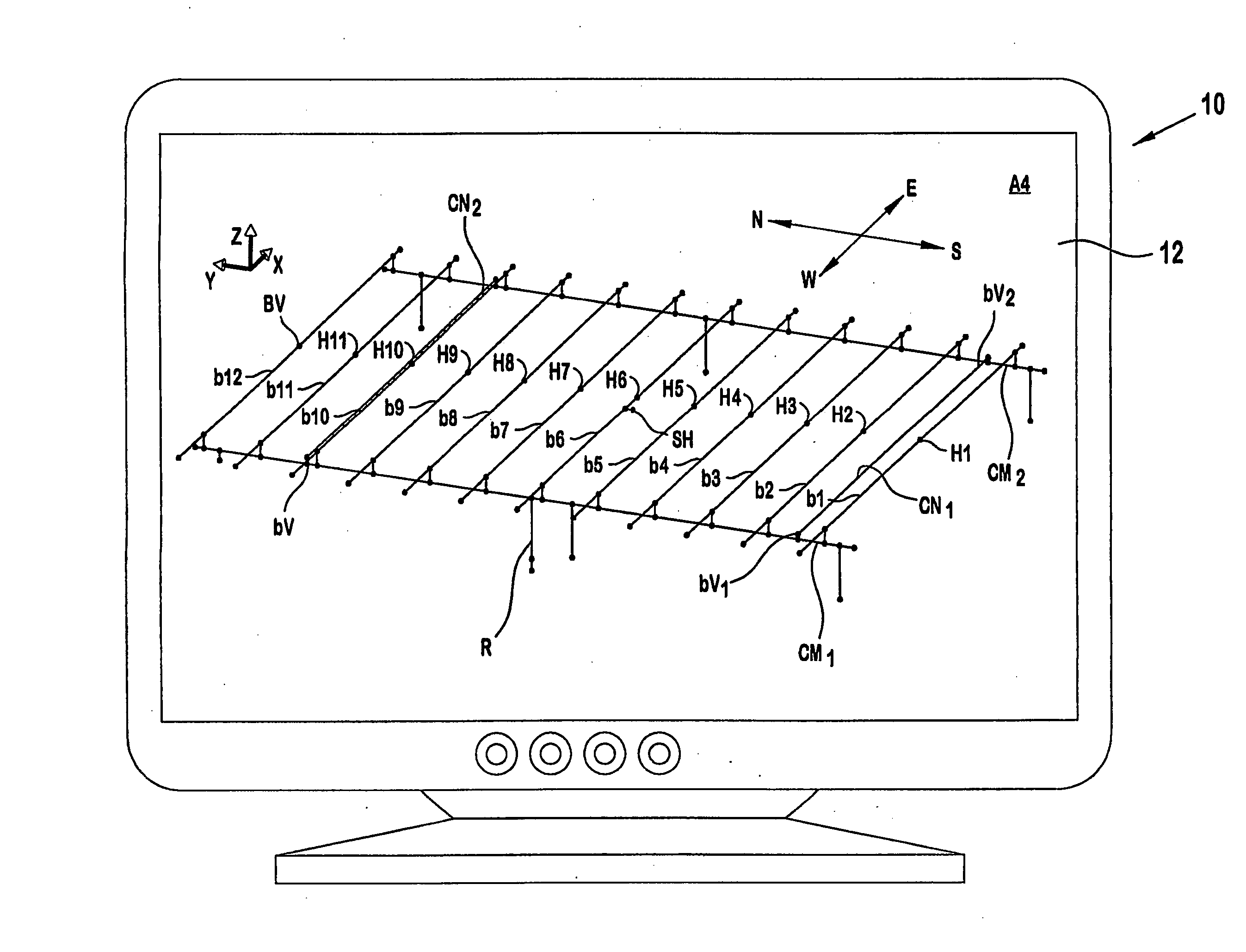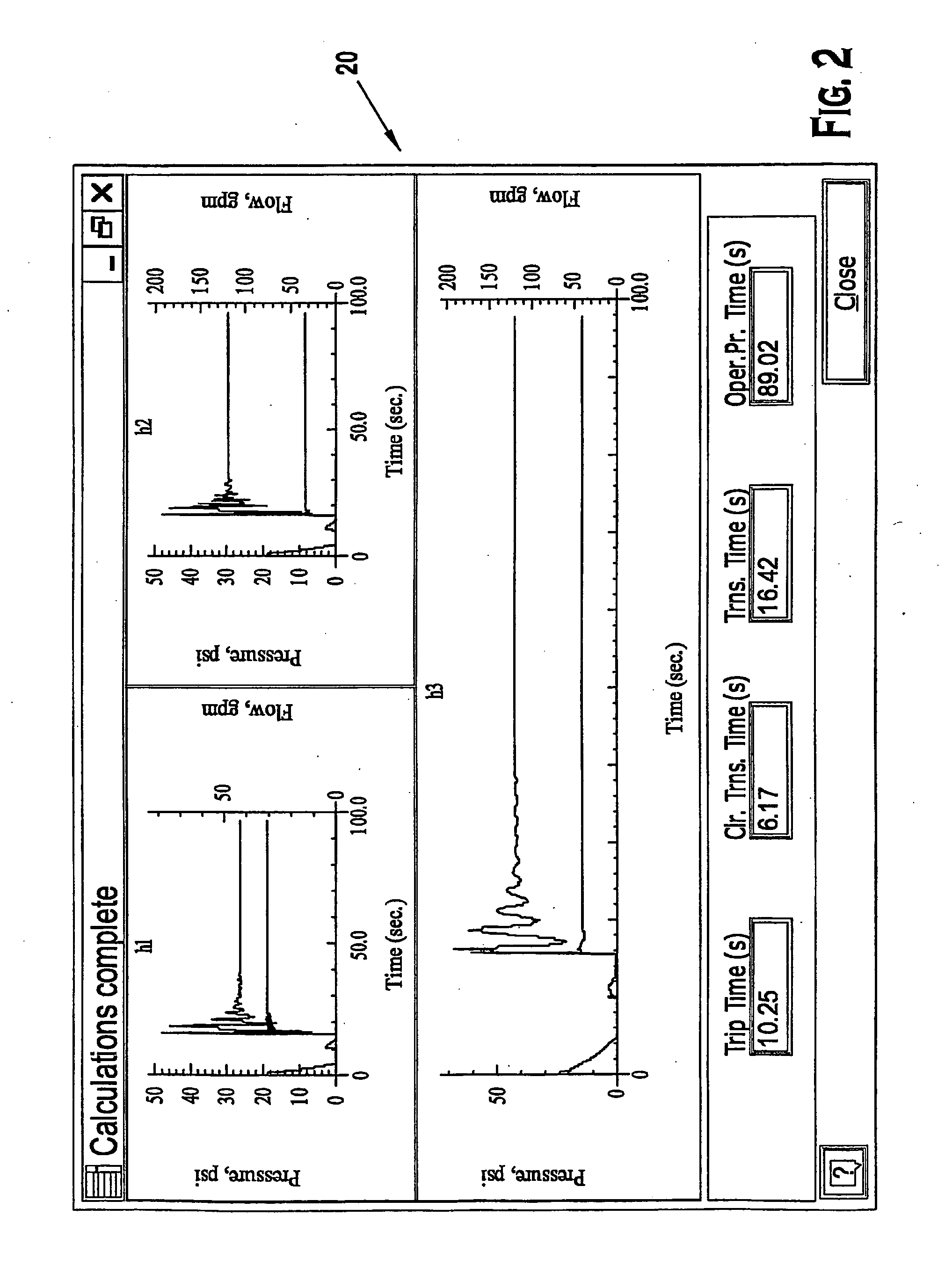System and method for evaluation of fluid flow in a piping system
a fluid flow and system technology, applied in the field of system and method for evaluation of fluid flow in a piping system, can solve the problems of model such piping network, insufficient correlation of model with real-world piping network, and insufficient current analytical model for such type of complex network
- Summary
- Abstract
- Description
- Claims
- Application Information
AI Technical Summary
Benefits of technology
Problems solved by technology
Method used
Image
Examples
Embodiment Construction
[0029]FIG. 1 depicts a graphical user interface that permits a system of tree-type fluid transporting network to be modeled in order to predict certain characteristics of the system, such as, for example, a valve actuation or trip time (i.e., the time it takes for a gas pressure in the system to drop below a threshold that allows a fluid to flow into the system), transient time (i.e., the time it takes for a fluid to reach one or more opening of the system) and steady state time (i.e., the time is takes for the fluid flowing through the network to the opening to reach a steady state flow condition). As used herein, the term “tree-type” denotes a branching configuration of pipes. FIG. 2 shows graphical outputs of a preferred embodiment of a computer modeling program. The computer modeling program permits at least these characteristics to be determined with a reasonable degree of certainty based on verifiable and repeatable correlations between predicted characteristics and actual cha...
PUM
 Login to View More
Login to View More Abstract
Description
Claims
Application Information
 Login to View More
Login to View More - R&D
- Intellectual Property
- Life Sciences
- Materials
- Tech Scout
- Unparalleled Data Quality
- Higher Quality Content
- 60% Fewer Hallucinations
Browse by: Latest US Patents, China's latest patents, Technical Efficacy Thesaurus, Application Domain, Technology Topic, Popular Technical Reports.
© 2025 PatSnap. All rights reserved.Legal|Privacy policy|Modern Slavery Act Transparency Statement|Sitemap|About US| Contact US: help@patsnap.com



